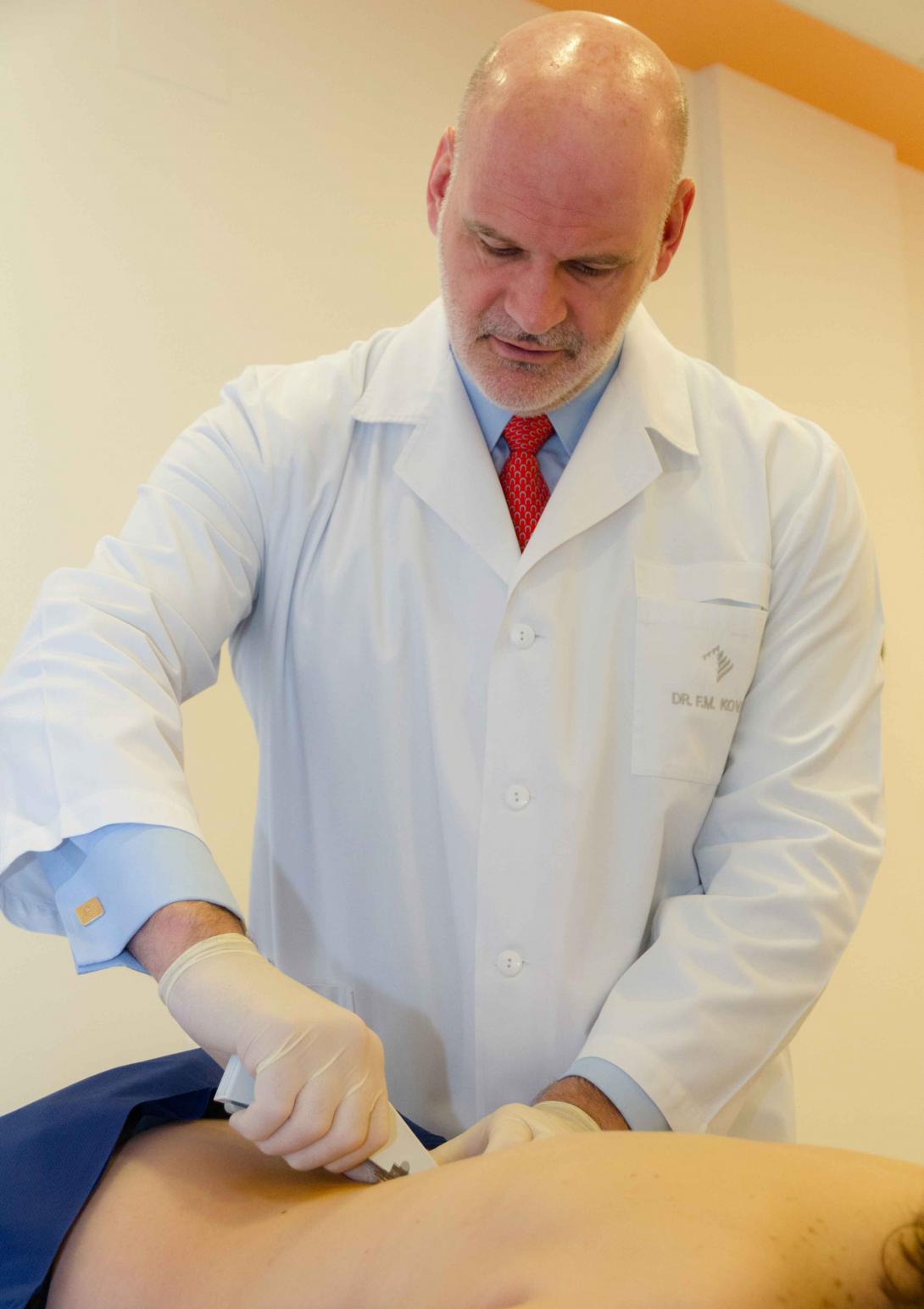
“Bad muscle condition is the most important risk for suffering from back pain”
by Cristina Puig Soler
Dr. Francisco Kovacs is the Spanish researcher with the most scientific production on the subject of back and neck pain. He finished his studies in medicine at the age of 19 and he received his doctorate suma cum laude at the age of twenty-two. Currently, he directs the Spanish Researchers Network in Back Pain (REIDE) from the Back Unit at the Madrid Hospital HLA Universitario Moncloa. He takes the call from ‘Compartir’ by WhatsApp from the other side of the Atlantic.
Why do we get back pain?
In 1 out of every 100 patients, the pain is due to a systemic disease, that is to say, it appears in the back, but it has another origin. Examples of this are some types of infection, cancer, aneurisms and referred pain of a gynaecological or digestive origin. On the other hand, 4 out of every 100 cases of pain are due to a structural condition, the most frequent being some specific cases of slipped discs and spinal stenosis. In the remaining 95%, a pain of a “non-specific” origin is diagnosed, caused by the soft tissues, such as muscles, tendons and ligaments.
Should we worry if we have a herniated or slipped disc?
Many healthy people have herniated discs that do not cause any problems for their backs if they do not compress or chemically irritate a nerve root. Around 30% of the healthy population has herniated discs that show no importance.
How should you act regarding problematic herniated discs?
Only 4% of herniated discs that compress a nerve root end up needing surgery. The need to operate is determined by the evolution of the pain irradiated to the leg, in the case of herniated lumbar discs, or the arm in the case of herniated cervical discs. If the irradiated pain is very intense and lasts for over six weeks, it is worth operating. Surgery shortens the length of time of the irradiated pain, but it has no effect on the back or neck pain and it also has no preventive result. In the remaining 96% of herniated discs that cause irradiated pain or loss of strength, most people recover in the same way, with conservative treatment.
What happens if we have a spinal stenosis?
In this condition, the channel through which the spinal cord runs or the holes through which the nerve roots leave the spinal cord get narrower, which starts to happen in people over the age of 60 years in 60% of the population. However, stenosis in itself is not important if it does not compress the nerve root or the spinal cord. When this does happen, it is a disease and when it is progressive or limiting and resists the conservative treatment, surgery has been shown to be effective.
Why do 95% of patients with “non-specific” pain get back pain?
Essentially, because the muscles are not working properly. This starts up a neurological mechanism that can explain that the pain, inflammation or contracture are perpetuated and become chronic, although the cause that initially triggered them has disappeared. When the pain remains for over three months it tends to become self-perpetuating.
Is this the reason that early diagnosis is so essential?
Of course. Doctors are obsessed with the idea that no patient with back pain due to a systematic disease can slip through our net, as although they only represent 1% of patients, some of these diseases are serious and diagnosing them in time can change their lives or even save them.
The foundation of diagnosis for back pain is clinical questioning and physical examination. It is a mistake to request complementary medical tests without first having physically examined the patient
What steps does the doctor follow to prepare a diagnosis?
The foundation of diagnosis for back pain is clinical questioning and physical examination. It is a mistake to request complementary medical tests, such as an MRI scan or an x-ray, without first having physically examined the patient. It is only worth requesting an additional test if, as a result of the clinical questioning and the physical examination, information is derived that suggest either the pain is due to a disease that does not originate in the back or there could be a neurological compression that might be subsidiary to surgery. The fact of prescribing an MRI scan when it is not clinically indicated increases the risk of the patient being operated on without this being necessary by 800%.
What cases of back pain require urgent medical care?
The only urgent case is Cauda Equine Syndrome, where the end of the spinal cord is either strongly compressed or it does not receive enough blood. This syndrome occurs in 1 out of every 700,000 patients.
What proven factors increase the risk of suffering from cervical, thoracic or lumbar pain?
The most important risk is bad muscle condition. Following this are vibrations that affect the entire body, as happens to people handling tractors or helicopters and in jobs that involve the frequent handling of important loads in flexion and extension, rotation or extreme postures.
Conversely, what has been shown to not increase the risk of pain?
Contrary to what doctors have thought for a long time, being overweight by 4 or 5kg; the number of hours we spend sitting down (although not a sedentary lifestyle), and postural hygiene have been shown to have a non-existent or insignificant effect.
The future of medicine for back pain involves individualisation?
Many studies have been carried out to determine the individualised prognosis of each patient. The idea is that each person can introduce their personal and clinical characteristics and the radiological tests and treatments received on a programme that allows the probability they have of improving to be indicated and, in terms of the treatment applied, discovering how this likelihood would change in each case. In fact, if you access the web site www.pronosticodolorlumbar.es you can already do this.
Is today’s technology an ally for our health?
Without any doubt. Modern medicine’s current capacity for computation and analysis is incredible. Using the data that healthcare generates every day to fine-tune and perfect the treatment and allow it to be individualised in each patient is the route along which all medicine is going to evolve.




